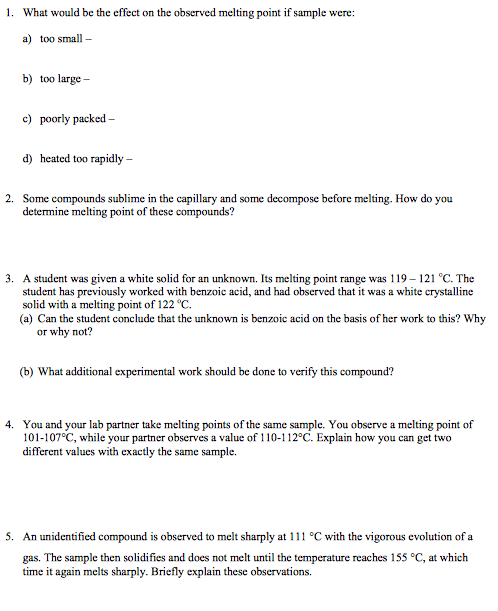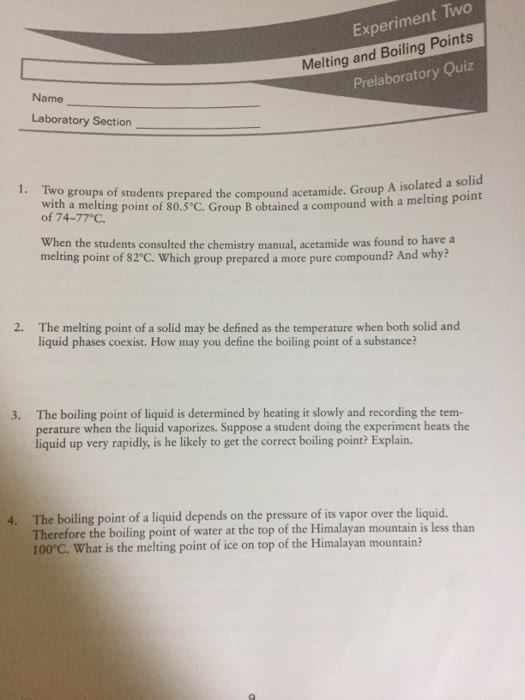1. An experimental melting point is always reported as a range of temperatures (for example 171-174ËC). A student observed the following while taking a melting point: âThe sample started shrinking at 93ËC. At 95ËC some liquid appeared. By 97ËC, the sample was a pool of liquid with a chunk of solid suspended in it. The suspended solid continued turning into liquid, becoming completely liquid at 98ËCâ.
a)What should the student report as the melting point?
b) What two types of information about an unknown solid can be obtained from its experimental melting point?
c) Suppose that a pure unknown compound could be either compound A, compound B, or neither. The following information was obtained: The listed reference melting points are: compound A is 111-112ËC, compound B is 145-147ËC. The experimental melting for the unknown alone was 145-147ËC. The experimental melting point of a mixture of the pure unknown with pure B was 135-146ËC The compound is therefore: (pick one): Compound A, Compound B, neither A nor B. Explain.
1. An experimental melting point is always reported as a range of temperatures (for example 171-174ËC). A student observed the following while taking a melting point: âThe sample started shrinking at 93ËC. At 95ËC some liquid appeared. By 97ËC, the sample was a pool of liquid with a chunk of solid suspended in it. The suspended solid continued turning into liquid, becoming completely liquid at 98ËCâ.
a)What should the student report as the melting point?
b) What two types of information about an unknown solid can be obtained from its experimental melting point?
c) Suppose that a pure unknown compound could be either compound A, compound B, or neither. The following information was obtained: The listed reference melting points are: compound A is 111-112ËC, compound B is 145-147ËC. The experimental melting for the unknown alone was 145-147ËC. The experimental melting point of a mixture of the pure unknown with pure B was 135-146ËC The compound is therefore: (pick one): Compound A, Compound B, neither A nor B. Explain.


